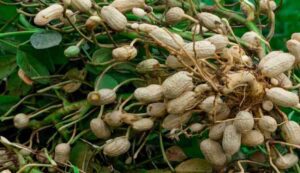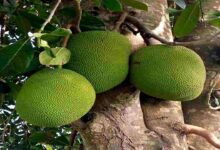Peanut Cultivation: To save the peanut crop from the attack of Goja Lat, follow this indigenous recipe
Peanut Cultivation: Farmers have begun planting crops in their fields as the monsoon season approaches. The peanut harvest has begun to emerge from the ground. Currently, the peanut crop is seeing an increase in Goja Lat infestation. The larva Goja Lat severely damages the crop’s leaves, which lowers the plant’s capacity for photosynthesis and negatively impacts production. Farmers must manage it quickly. Goja Lat larvae may be managed at home by farmers without the use of pesticides.

Use these natural cures
According to agriculture expert Sona Ram, farmers can eradicate Goja Lat by using neem leaves. A potent natural pesticide is neem. Five milliliters of neem oil should be combined with one liter of water, well mixed, and sprayed over the crop. It prevents caterpillars from growing and eating.
In addition, neem cake kills the eggs and larvae of dangerous insects that are present in the soil when it is added to the soil during field preparation.
Solution made from cow urine
According to the agricultural expert, farmers should combine a little bit of garlic paste or chili powder with one liter of cow pee and nine liters of water, then spray the mixture. Its strong scent and qualities repel caterpillars and boost plant resistance. In addition, farmers may use pheromone traps across the field to draw in the male Goja Lat bug.
By capturing male insects, fewer eggs and larvae are produced, which lowers reproduction. At night, keep a kerosene lamp or lightbulb burning in the field. In the pail of water below, mix some pesticide or kerosene. The adult insects are drawn to the light, fall into the water, and perish. At the same time, break the impacted leaves to gather the caterpillars and eliminate them if there are less.
Important considerations for peanut farming success
Sona Ram, a specialist in agriculture, advised farmers to utilize organic fertilizer to increase peanut yield. According to him, peanuts should get modest watering throughout their planting, blooming, and pod development phases. Aside from that, use herbicides correctly or conduct timely weeding. Regular field monitoring allows for the early detection of any disease or insect infestation. When the crop is ripe—that is, when the leaves begin to turn yellow—dig it promptly.

